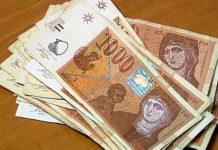Content
A combination of knowing what each part of the form guide means and knowing what parts to lift out and use yourself is needed if you want to be a successful horse racing punter. Learning the form book, and then implementing what you have learnt is a step that many people make while betting. At the side of your horse, you will see a line of form numbers. These may include letters, which we will get to shortly, but for flat racing, you will see full numbers. The number that is on the right-hand side of the sequence is the most recent run, and you will usually see the last three or five runs, though some form cards will show more. Understanding the form and reading it correctly should enhance your horse racing knowledge and allow you to enjoy yourself more and place better-planned bets with your betting sites UK.
- Probably, but if you watched the races in question or pored over the form it could reveal that this horse lacks pace in the final furlong.
- The racecard is essential reading when it comes to making more knowledgeable bets.
- And there are true course specialists in both flat and jumps racing.
- Racing forms, which are typically sold at race tracks, are independent publications that provide a comprehensive history of the horses participating upcoming races.
- A bold number on a flat card means that run was on an all-weather track.
Next to the track, you will then find the conditions of that race. The final section of general information for each of the runners can be found on the right-hand side. As well as this information, the middle column is also the place to find the pedigree of the runners involved. We Review each of the leading online Australian Bookmakers and rate them in order… Known as the ‘Sport Of Kings’, an industry worth billions, a very serious business…but to some, it’s a… Betting in Australia has never been more popular thanks to a large increase in new betting Agencies and Apps available… Jamie Kah’s resurgence continued an upward trajectory during the final day of the Melbourne Cup carnival, with the former premiership…
Reading Form / How to Read a Race Card
There is a lot more to bear in mind when studying form, not least the track the horse was racing at. Just because a well-fancied favourite finished sixth last time out, you shouldn’t immediately dismiss its chance this time. Again, this is easy to understand but it will enable you to determine whether the trainers are in form and whether they have a good record at a certain course.
In these scenarios, you may unearth some striking value that will help you pick a selection next time out. With the constraints on newsprint, it is best to head online for more depth. For example, links from the racecard will lead you to actual race results, showing you what happened. The distance over which the race will be run in miles, furlongs (eighths of a mile) and yards.
As different tracks are running different races each day — this number will help you find the right race. Race cards also use some other letters to indicate other important information that punters might want to know. CD – means a horse has won over the course and distance of the race. Further numbers may also tell you how long it’s been since a horse last run, their age, weight in stones and further in pounds.
The age of the horse in years, with each horse ageing one year on the 1st January each year irrespective of their biological date of birth. Ranging from Grade 1 (the best) to Class 6 (the worst) in National Hunt; and Group 1 (the best) to Class 7 (the worst) on the flat. This https://scratchmatch.com.br/es/ website uses Google Analytics to collect anonymous information such as the number of visitors to the site, and the most popular pages. Betting forecast – Prediction models anticipate what the odds may look like based on many different stats before any prices are listed.
Wrong Horse Wins Race? A Bizarre Situation In Ireland
They come from experts, track conditions, and the horse’s history. Race cards also don’t tell you how to use information such as draws, ratings, trainer form, jockey bookings, and breeding to your advantage. But in the hands of a professional gambler or tipster who spends hours studying horse racing form and statistics, information scratch match is a deadly weapon. If you are lucky, some racecards will also offer professional betting insight from profitable U.S. horse racing tipsters. For example, when you look at Timeform’s daily racecards for U.S. and UK racetracks, you’ll also receive a selection for every single race that will be run at your chosen racetrack.
Forming an Opinion
Favorable moneyline odds show how much profit you’d make on a $100 bet. Unfavorable odds indicate how much you need to bet to win $100. You can find it written in large fonts, on the top, separated from the underlying text by a line. Breeding is a complex process in which breeders try to cross bloodlines to try and create racehorses with that perfect match of speed and stamina. Sires and mares can often be a good indicator of the optimum conditions a horse needs to excel, regarding distance and going conditions.
For example, long-distance races may benefit older, more experienced horses that have the stamina and know-how to stay the course. Many of the recent winners of the UK Grand National are age 10 and older. Shorter, sprint races may play nicely into the hands of younger upstarts. This can be useful if certain jockeys or trainers are renowned to perform well at a certain racetrack or race distance. In Flat racing there is often a bracketed number beside the saddle cloth number, this denoted which stall the horse has been drawn in.
Age
The stall number is the other number listed, which can be beneficial if a racetrack has something known as a “draw bias,” where horses drawn in certain stalls make better starts than others. First off when using the racecard, check the times for each race and from there you’ll see a list of all the horses and jockeys in the race. Everything about a racehorse can be found in the racecard, that’s why it’s helpful to understand how to read a racecard. The key pieces of knowledge that all horse bettors must have before making sports betting wagers on the sport revolves around knowing how to read a race card. Like any other sport, horse racing has many people that take part in the action. There are people from the stable where the runner is trained all the way to the grounds where a race takes place.
The disappointing result could have been because the horse and jockey suffered interference when cruising, got trapped in on the rail, or perhaps the rider dropped the whip on the run-in. As Frankel is retired to stud, his current fee is listed at the top per ‘cover’ though naturally those still racing do not have this information. 7f means seven furlongs and is the distance the race is run over.
Ibiza Rocks is well up to winning the final leg (7.30), an extended mile handicap, but I feel it’s worth doubling up with Waleyfa. Renowned jockey James Hugh Bowman, who had previously faced suspensions for careless riding in both Hong Kong and Australia, marked… Protectionist, the esteemed winner of the 2014 Melbourne Cup, has died at age 13, Australian Bloodstock announced. On Bookmakers.bet, we are committed to giving valuable betting advice to all levels of players. Whether you are an amateur or a professional bettor, we will show you all the necessary steps to become successful. From fundamentals, such as opening an account and completing the KYC process, to advanced principles, like avoiding scam bookmakers and making the most out of the bonuses, we have all bases covered. Lay the draw is perhaps the most frequently used strategy when it comes to football trading.
12/2023 Horse Racing Tips and Best Bets – Narromine
His grand sire was named Danehill, bred in the USA and his progeny average just over nine furlongs. This means Frankel was sired by Galileo, who was bred in Ireland and whose progeny average 11.3 furlongs. 32 Red Casino Handicap is the name of the race, including its sponsor. As an example, I’ve taken a handicap race at Kempton Park to show you what all the various symbols and numbers mean. The shortest distance in National Hunt racing is just under two miles, while the longest distance is just over 4m2f, tackled in the Aintree Grand National in April.
How to read a racecard: Horse Racing form guides explained
The British Horseracing Authority (BHA) has a handy guide to how handicapping works in British horse racing; much of which is transferrable to U.S. horse racing, too. In flat racing, they might collect data for sections of a race as well as the raw time. Very often you will hear about a “race being run to suit” a particular horse but not another. Some horses perform well off a fast gallop, others are happier when there is a steady pace throughout because they have a strong finishing kick. All British racecourses have to report the GoingStick readings on the day of the race. Tracks deemed Hard (HD) are no longer raced, as they are considered to be unsafe for both horses and jockeys. With the right form analysis, you can go from making guesses about horse racing to carefully selecting runners based on past form, which will more than likely increase your chances of winning.




























